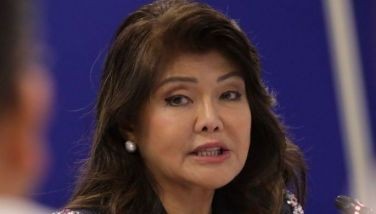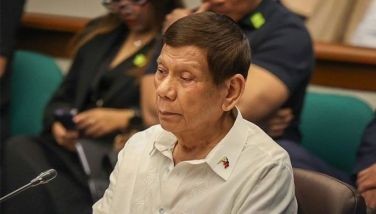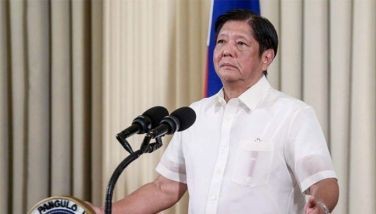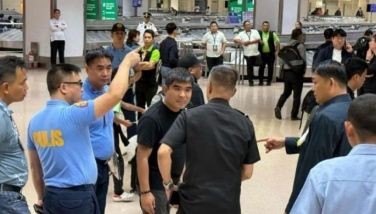Top Chinese official Wang Yi visits Philippines

With the problems in Washington, the ongoing trade war between China and the US, conflicts will heighten. It will do so both in obvious and subtler ways we have never known before.
China sent no less than Foreign Minister Wang Yi on a Southeast Asian tour last week to signify that they are ready for the challenge. He went on a six-day tour of Africa the week before.
Analysts believed that COVID-19 vaccine cooperation would be a top priority of the trip, Wang’s second to Southeast Asia since the beginning of the pandemic. But vaccines are only part of his mission.
The more significant reasons for Wang’s visit is to ensure the implementation of China’s Belt and Road Initiative and regional stability in the countries it will cover.
On COVID-19, Myanmar, the Philippines and Indonesia are the three Southeast Asian countries most affected by the pandemic. According to the WHO, the cumulative case counts are 858,043 for Indonesia, 492,700 for the Philippines and 132,260 for Myanmar as of Jan. 14.
Vaccines are the key for them to prevent the virus from spreading in the coming months. Indonesia has so far received 3-million vaccine doses from China’s Sinovac Biotech. Myanmar and the Philippines have negotiated to purchase Chinese vaccines. During the first stop of his five-day tour, Wang promised Myanmar 300,000 doses of a Chinese vaccine against COVID-19. Yesterday, he pledged 500,000 doses for the Philippines.
China’s vaccine is being maligned as ineffective or even harmful by some Western groups. It is expected that because of the ignorance of the masses of this power struggle, the Western press, with the cooperation of oligarch-owned media, is using anti-Chinese propaganda to promote the American and European brands.
This is not being helpful to weak and poor countries which cannot afford the Western brands.
Those who know better should not fall for the black propaganda scheme. In a webinar held last week, Bank of China (BOC) Manila country head Deng Jun said Wang Yi’s visit to the Philippines, with the pandemic raging on, is a testament to the centuries of friendship and goodwill between our two countries.
Deng remains positive of the country’s economic prospects and, in fact, BOC will be raising its loan portfolio by 20 percent. Since 2016, it has provided $350 million worth of credit to Philippine businesses in the energy, telecommunications, water, logistics, steel, agriculture and trade industries. BOC also assisted our Bureau of Treasury in the issuance of panda bonds in 2018 and 2019, which were both oversubscribed. In 2017, the bank in partnership with the DTI and their Philippine counterparts organized a business matchmaking event in Manila with more than 600 participating companies and 230 letters of intent signed onsite. Through such cooperation, our Philippine exporters were able to expand their businesses to the burgeoning 1.5 billion China market, most recently bagging $460 million in deals in the 2020 China International Import Expo, even during the pandemic!
Largely unreported, BOC also helped established the PHP-RMB trading community with 13 of the country’s banks. This mechanism saves friction costs for businesses in both sides.
Filipino business people, travelers, OFWs save on the exchange rates and are able to do business with the China market directly without having to use the US dollar. For the economy, this increased the transaction volumes for business and prepared the country to benefit more from growing Chinese tourism and investments.
In 2019, there were 155 million Chinese tourists, spending $ 270 billion worldwide, compared to US tourists’ $180 billion. We all know tourism is one of the major contributors of inclusive growth… We need to prepare now when the pent up energy is let loose.
We must follow President Duterte’s lead when he said the Philippines will promote its best interests. In the coming days fake, misleading and lack of perspective news can and will block our country’s development.
George Siy, Wharton-educated business leader, said in a recent webinar that the world is now experiencing simultaneous massive tides and the ability to ride them will determine our success, or be left behind again.
The key to development lies in being able to compete and cooperate even with rivals. He cited the case of Vietnam which transitioned from a war-torn country to one of the world’s fastest growing economies with both China, despite ongoing disputes, and the United States, despite wars with both, as its key partners and investors.
Despite the US-China trade and tech war, US companies continue to do good business in China, with Tesla and General Motors’ joint ventures with Chinese auto company SAIC dominating the lucrative electric vehicle market. Despite disputes, China, Japan and South Korea are also negotiating for a free trade agreement.
Siy, who also heads the think-tank IDSI, debunked claims of China ensnaring countries into debt traps. In the case of Sri Lanka, China’s loan was only 13 percent of the South Asian country’s exposure to loans, the rest are from Western and other foreign lenders. After China’s investment, India, Japan, South Korea increased their investments in Sri Lanka too. He also cited the Piraeus port in Greece, a country which was reeling from bankruptcy due to the US 2008 global financial crisis, to now operating the busiest port in the Mediterranean with the assistance of China.
The completion of the multibillion-peso Angat Project which started under GMA and completed under Aquino, finished eight months ahead of schedule, is another example of a successful cooperation model; two Chinese-donated rehabilitation centers in Mindanao also finished 11 months ahead of schedule and the two bridges connecting Manila are also on the way.
Department of Finance Undersecretary Mark Dennis Joven noted the surge in Chinese official development assistance (ODA) to the country in the last five years – a 180 percent change from previous years. Between 2016 to 2020, Chinese ODA grew to $2,059 million – $1,565 million in loans and $494 million in grants.
While physical infrastructure development attracts much attention, Chinese ODA also provides funds to support flood control and local governance capacity development through information and communication technology.
We can all help by spreading the development cooperation with China, the superpower in our neighborhood.
- Latest
- Trending





























